- Home
- Stephen Baxter
Evolution Page 4
Evolution Read online
Page 4
Dinosaurs were different.
They did not hunt like the mammalian killers of later times. Their cold blood meant they were poor at sustaining speed for long distances; they could never be endurance hunters, running down their prey like wolves. But they had versatile, high-pressure hearts. And the design of their bodies had much in common with birds’: This raptor’s neck bones and torso contained a duct system that drew the air through its lungs, and oxygen could be supplied to its tissues at a tremendous rate. It was capable of short sprints, and could pour a great deal of energy into its attacks.
Dinosaur hunts were events of stillness, of ambush and silence and motionlessness, broken by brief bursts of savage violence.
Mammals were not poorly evolved compared to the dinosaurs. The product of her own track of tens of millions of years of evolution, Purga was exquisitely adapted for the niche in which she made her living. But the brutal facts of energy economics kept mammals caged in the neglected corners of a dinosaur world. Overall, a dinosaur killer made better use of energy than mammals: This raptor could run like a gazelle but it rested like a lizard. It was that combination of energy efficiency and lethal effectiveness that had kept the dinosaurs supreme for so long.
The raptor was something like a huge, ferocious bird, perhaps. Or something like a souped-up crocodile. But it was not truly like those animals. It was like nothing seen on Earth in human times, something no human eye would ever witness.
It was a dinosaur.
This raptor’s preferred way of killing was to burst out of cover and slash at its prey, inflicting wounds that were savage but often nonlethal. The prey might flee, but it would be weakened by raking wounds to its legs and flanks — or hamstringing — blood loss and shock would result. The raptor had poor dental hygiene — its breath stank ferociously — and its bite passed on a mouthful of bacteria. The raptor would follow, perhaps attacking again, perhaps just following the scent of the stinking, infected wounds, until weakness disabled the prey.
Today this raptor had been lucky; it had disabled its victim with a single blow. All it had to do now was wait until the titan was too weak to do the raptor any harm. It could even take its food while its prey was still alive.
The raptor would not trouble with such small fry as Purga while such a giant meal awaited it. Moving cautiously, watchfully, Purga left the shelter of the fern, and scurried across the scrubby floodplain, through the devastated track left by the anatotitan herd, until she reached the security of the trees.
For the first time in four billion years, heat had touched the Devil’s Tail. Fragile ice sculptures older than Earth were quickly lost.
Gases boiled through fissures in the crust. Soon a shining cloud of dust and gas the size of the Moon had gathered around the comet. The wind from the sun, of light and sleeting particles, made the gas and dust stream behind the falling comet nucleus in tails millions of kilometers long. The twin tails were extremely tenuous, but they caught the light and began to shine.
For the first time, uncomprehending eyes on Earth made out the approaching comet.
Spitting, rotating, its dark nucleus founting gases with ever greater vigor, the Devil’s Tail swam on.
III
Another long, hot Cretaceous day wore away.
Purga slept through the day, her new family curled around her. She slept even when her pups suckled. The snug burrow floor was littered with the primates’ soft fur — and it smelled, indubitably, of Purga, of her new mate, and of the three pups who were half of herself.
Purga’s mate gave himself no name, and nor did Purga name him, any more than she named herself. But if she had — in recognition that he could never be the first in her life — she might have called him Second.
As Purga slept, she dreamed. Primates already had brains large and complex enough to require self-referential cleansing. So she dreamed of warmth and darkness, of flashing claws and teeth, and of her own mother, huge in her memory.
Purga, like all mammals, was hot-blooded.
All animal metabolisms were based on the slow cellular burning of food in oxygen. The first animals to colonize the land — gasping fish, driven from drying rivulets, using swim bladders as crude lungs — had had to rely on metabolic engines designed for swimming. In those first land-walkers the metabolic fires had glowed dimly. Still, their decisive move onto the land had been successful; and now and into the future every animal — mammals, dinosaurs, crocodiles, and birds, even snakes and whales — would use a variant of the same ancient tetrapod body plan of four legs, a backbone, ribs, fingers, and toes.
But some two hundred million years before Purga’s birth, certain animals had begun to develop a new kind of metabolism. They had been predators, driven by selection to burn food more briskly in order to improve their luck in the chase.
It had meant a complete redesign. These ambitious predators needed more food, a higher rate of digestion, a more efficient system of waste elimination. All this had raised their metabolic rate, even when resting, and they had had to increase the size of heat-producing organs like the heart, kidneys, liver, and brain. Even the working of their cells had speeded up. In the end a new and stable high body temperature had been set.
The new hot-blooded bodies had had an unplanned advantage. Cold-bloods relied on drawing heat from the environment. But the hot-bloods did not. They could operate at peak efficiency in the cool of night, when the cold-bloods had to rest, or in extreme heat, when cold-bloods would have to hide. They could even prey on cold-bloods — frogs, small reptiles, insects — at times like dawn and dusk, when those slow movers were vulnerable.
But they could not topple the dinosaurs from their thrones; the dinosaurs’ supreme energy efficiency saw to that.
Purga’s dreams were disturbed by the immense stomping of the dinosaurs as they went about their incomprehensible activities in the world of day above. The ground would shake as if in an earthquake, and bits of the burrow walls crumbled and fell around the dozing family. It was as if the world was full of walking skyscrapers.
But there was nothing to be done about any of that. To Purga the dinosaurs were a force of nature, as beyond her control as the weather. In this huge, dangerous world, the burrow was home. The thick earth protected the primates from the heat of the day, and sheltered the still-naked pups from the night’s chill: The earth itself was Purga’s shelter against dinosaur weather.
And yet, at the back of her small mind, there was a tiny chapel of memory, a reminder that this was not her first home, not her first family — a lingering warning that she could lose all this, too, in another instant of light and flashing claws and teeth.
When the Earth turned and the air cooled and the dinosaurs settled into their nightly torpor, at their feet the dirt stirred. The creatures of the night emerged: insects, amphibians — and many, many burrowing mammals, rising like a tide of miniature life around the dinosaurs’ pillarlike legs.
This night Purga and her new mate traveled together. Purga, a little older and more experienced, led the way. A few centimeters apart, proceeding in cautious fits and starts, they made their way down the shallow slope toward the lake.
They did not usually forage together. But the weather had been dry, and the priority for both of them was to get a drink.
This part of America had endured a long, epochal drying. Here the relic of the ancient inland sea was a great stretch of swampy land, drowned by new sediment from the Rockies to the west, young mountains eroding almost as quickly as they were born. And in this time of relative drought, any standing water was a focus for animals large and small.
And so the lakeshore was crowded with dinosaurs.
Here was a herd of triceratops, three-horned giants with huge bony frills that covered their shoulder regions. They were like heavily armed rhinos, dozing in their loose circles, the adults’ ferocious horns pointing outward to deter any hungry, night-prowling aggressor.
There were many duck-billed hadrosaurs. Herds had gathered ar
ound this shallow lake, a bewildering, brightly colored array of them, and Purga and Second had to creep past forests of their great, immobile legs, like refugees in an immense sculpture park. Even now, as the duckbills slumbered, their unconscious snoring was a cacophony of deep and mournful hoots, honks, and cries; they sounded like fogbound ships.
At last Purga and Second reached the edge of the lake. The water had receded, and they had to cross a stretch of stony, half-dried pond-bottom mud, slick with mucus and sheets of green vegetation. In the eerie, still light, Purga drank quickly, her eyes wide and whiskers twitching.
Their thirst sated, the primates split up. Second began to track over the shallow beach, looking for the little piles of coiled sand that marked the presence of a worm.
Purga moved up the beach to the fringe of the scrub, following a more intriguing smell.
She soon found the source of the stink: a fish. It was lying in a heap of rusty fern fronds, its carcass shriveled within its silvery skin. Somehow stranded far from the water, it had been dead many hours. When Purga poked the fish’s skin it burst, releasing a voluminous, noxious stench — and a squirming mass of ghost-pale maggots. Purga plunged her paws into the carcass. Soon she was pushing maggots into her mouth; the salty goodies burst between her teeth, releasing delicious body juices.
But now another fish came flying over her head, to land deeper into the scrub. Startled, she flattened herself, whiskers twitching.
A dinosaur was standing stock-still in the shallow water. She was tall and upright, some nine meters tall, with a jaw like a crocodile’s and a great purple-red sail on her back. Her teeth were hooked, and her hands were equipped with claws like great blades all of thirty centimeters long. Suddenly she plunged her claws into the water, breaking the glimmering surface into shards. A handful of silvery fish flew up, wriggling and squirming, and the dinosaur skillfully snapped most of them out of the air with her long mouth.
This was a suchomimus, a specialist hunter of fish. Her kind was a relatively recent immigrant from Africa, having traveled the land bridges that sporadically connected the continents. She dragged for fish like a bear. She could take her prey with her claws or by scooping her crocodilian jaw through the water, relying on her hooked teeth. She was hunting in the night — when most creatures of her size had become dormant — because now was the time when the fish, lulled by the dimming of the daylight, came to the surface and the shore to feed.
Some meters behind her, a second suchomimus followed. This was a male; like many hunting dinosaurs, the suchomimus traveled in mating pairs.
The female suchomimus swiped again, and fish rained onto the dry shore, where they flopped briefly, suffocation quickly extinguishing their pinpoint sparks of consciousness. But the female suchomimus ignored such easy takings, apparently preferring the game of the hunt.
As did the watching deinosuchus.
The deinosuchus was a giant crocodile. She glided through the water of the lake, almost silent, hidden from view by a thin surface layer of aquatic fern. Her transparent eyelids slid over yellow eyes, keeping the tiny green leaves away.
This deinosuchus was a female: already sixty years old and twelve meters long, many of her offspring had grown to hunters themselves. A time like this — a time of drought, a time when animals came clustering to the water, in their thirst losing some of their native caution — was a bonus time for the crocodiles, a time of easy pickings. But the deinosuchus was a creature capable of taking on a tyrannosaur; she seldom went hungry, whatever the weather.
The crocodiles were already ancient, descended from bipedal hunters some hundred and fifty million years before. They were supremely successful, dominating the shallow waterways and lakes all over North America and beyond: They were among the few animals of the Cretaceous to die of old age. And they would survive to the time of humans and far beyond.
The exquisitely adapted nostrils of the deinosuchus could sense the motions of the suchomimus pair at the edge of the lake. It was time. Her mighty tail flexed once.
Purga saw a kind of eruption at the edge of the lake. Pterosaurs and birds rose from floating nests, cawing throatily in protest. The male suchomimus barely had time to turn his expressionless head before the crocodile’s jaws locked around one of his great hind legs. The crocodile hauled backward, bringing the suchomimus crashing to the mud, crushing his beautiful crest. The suchomimus hooted and fought, trying to bring its long, bloody claws into play. But the crocodile slithered back toward the water, taking the suchomimus with her.
Barely a minute after the deinosuchus had emerged, the turbulence of its passing soothed away from the surface of the water. The female suchomimus seemed baffled by her sudden loss. She patrolled the water’s edge, hooting mournfully.
The crocodile had been a messy killer. The mud of the shore was left soaked in blood, and littered with scraps of the suchomimus — lengths of glistening entrails, chunks of ripped flesh, even its staring, dismembered head. The first scavengers on the scene were a pack of small, agile raptors; they burst from the undergrowth, hopping, jumping, and swiveling, lashing out at each other like kickboxers as they fought over the juicy scraps of flesh.
They were soon joined by pterosaurs, flapping in noisily. They landed on the mud and walked clumsily, with legs and elbows splayed like a bat’s. Their heads were long, their beaks narrow and equipped with sharp teeth. The beaks dug deep into the remnants of the suchomimus. As more pterosaurs were attracted, the sky became darkened by their gaunt wings. One pterosaur in particular descended toward the two toiling primates.
Purga saw it coming. Second did not.
His only warning was a gush of leathery air, a glimpse of huge, hair-covered wings flapping across the sky above him. Then clawed feet fell out of the sky and enclosed him like a cage.
It was over before Second knew what had happened. From the comforting noises of the ground he was lifted into a silence broken only by the rustle of the pterosaur’s huge flapping wings, the silky straining of its wirelike muscles, and by the rush of the wind. He glimpsed the land, dark green and pocked by blue-glimmering ponds, falling away beneath him. And then the view opened up spectacularly to the southeast, the direction where the comet lay. The comet’s head was a vast unearthly lantern hanging over the tongue of sea that pushed into the land from the Gulf of Mexico.
Second longed only to get out of this cage of scaly flesh, back to the ground and his burrow. He thrashed at the talons that contained him, and tried to bite into the flesh; but the scales of the huge creature defied his small teeth.
And the pterosaur squeezed until small primate ribs cracked.
The pterosaur was an azhdarchid. She was the size of a hang glider. Her massive, toothless head, with a pointed triangular beak at the front and an elaborate crest at the rear, was sculpted to serve as an aerodynamic aid. Her hollow bones and porous skull made her remarkably light, and her body was tiny. She was nothing but wings and head. She looked like a sketch by Leonardo da Vinci.
The spar of each pterosaur wing was a single tremendous finger. Three remnant fingers created a small claw in the middle of the leading edge. The wing was held open by her hind legs. With all four limbs occupied in controlling the aerodynamic surfaces, the azhdarchid’s relatives could never diversify, like the birds, into running or aquatic forms. But the pterosaurs had been astonishingly successful. Along with birds and bats, they had been one of only three groups of backboned animals to have mastered flight — and they had been the first. By now pterosaurs had darkened Earth’s skies for more than a hundred and fifty million years.
The azhdarchid was capable of taking fish from shallow waters, but made most of her living as a scavenger. She rarely took live mammals. But Second — who had been engrossed in devouring a worm he was pulling from the sand — had not realized how visible the bright comet light had made him. He was not the only animal whose rhythms and instincts were disturbed by the new light in the sky. He had been an easy capture.
Second
lay still, encased in pain, as cold air washed over him.
He could see the great outstretched wings above him, comet light shining blue through the translucent skin. Tiny creatures squirmed: a pterosaur’s wing was an enormous expanse of almost hairless skin packed with blood vessels, a powerful lure for parasitic insects. Every square centimeter of the pterosaur’s wing surface was controlled by an underlying mat of muscle fabric, enabling the azhdarchid to control her aerodynamics with exquisite precision; her body was a better engineered glider than any manufactured by human hands.
The azhdarchid banked to avoid a smudge of volcanic cloud that hung above the young mountains. It would be fatal for her delicate wings to be caught in such foul air. She was expert at spotting upwelling fountains of warm air — marked by cumulus clouds or over the sun-facing slopes of hills — that she could exploit for free lift. To her the world was a three-dimensional web of invisible conveyor belts, capable of carrying her anywhere she wanted to go.
The azhdarchid’s nest was in a foothill of the Rockies, above the tree line. A steep wall of young rock soared above a guano-stained ledge littered with eggshells and bones and beaks. Chicks stalked noisily around this confined area, scattering the bits of shells from which they had emerged a few weeks earlier. There were three of them; they had already devoured a weakling fourth sibling.
The parent worked a spur of bone in her wrist that changed the shape of the wings’ membrane: like air brakes, this enabled her to slow without stalling. She came to a halt a meter above the ledge, and dropped onto her hind legs. She stowed her delicate wing membranes, folded her flight fingers across her back, and walked forward, her knees bent outward and her elbows bent.
Second was dropped. He clattered against bare rock. He glimpsed the adult azhdarchid flap away. He scrabbled at the rock, but it was too hard to burrow into.

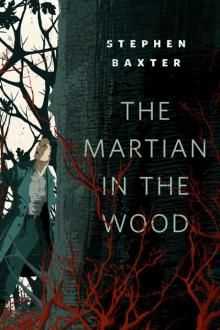 The Martian in the Wood
The Martian in the Wood THE H-BOMB GIRL
THE H-BOMB GIRL World Engine
World Engine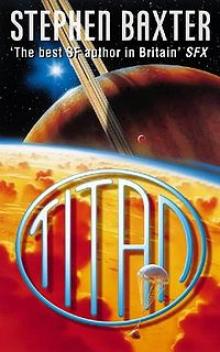 Titan n-2
Titan n-2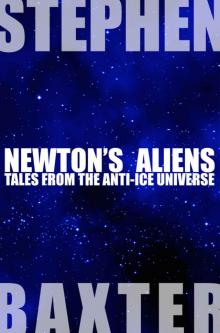 Newton's Aliens: Tales From the Anti-Ice Universe
Newton's Aliens: Tales From the Anti-Ice Universe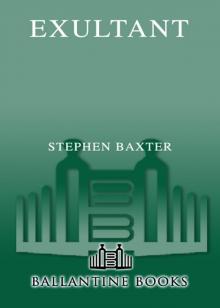 Exultant
Exultant Manifold: Origin
Manifold: Origin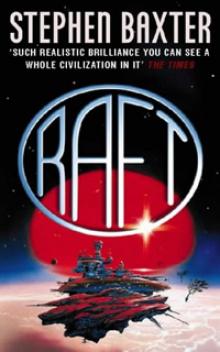 Raft xs-1
Raft xs-1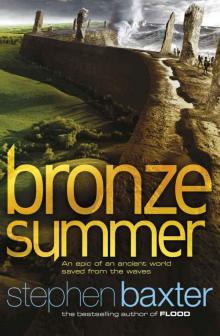 Bronze Summer n-2
Bronze Summer n-2 Transcendent
Transcendent Stone Spring
Stone Spring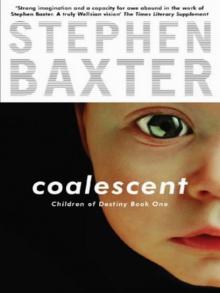 Coalescent
Coalescent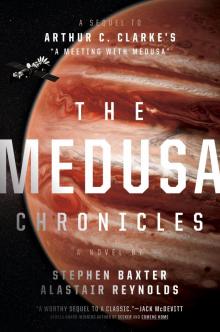 The Medusa Chronicles
The Medusa Chronicles Origin m-3
Origin m-3 Silverhair tm-1
Silverhair tm-1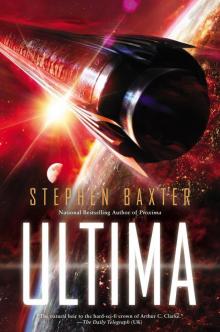 Ultima
Ultima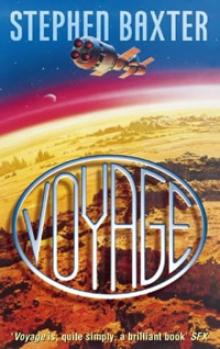 Voyage n-1
Voyage n-1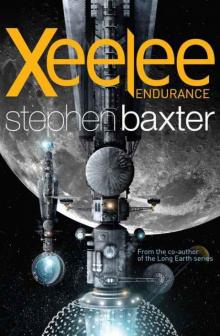 Xeelee: Endurance
Xeelee: Endurance Space m-2
Space m-2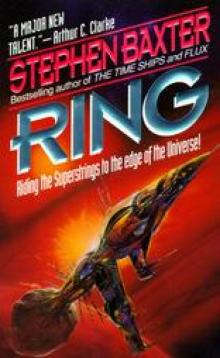 Ring xs-4
Ring xs-4 Raft
Raft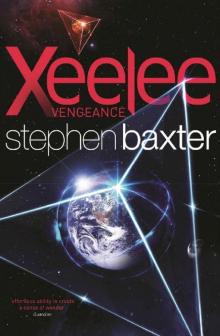 Xeelee: Vengeance
Xeelee: Vengeance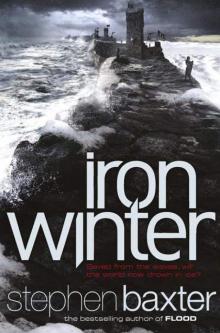 Iron Winter n-3
Iron Winter n-3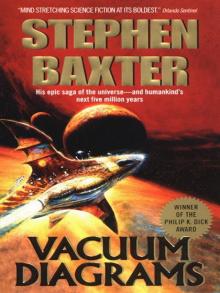 Vacuum Diagrams
Vacuum Diagrams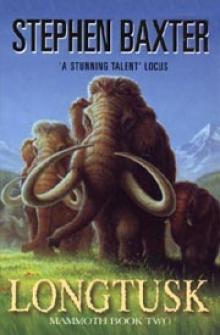 Longtusk tm-2
Longtusk tm-2 Proxima
Proxima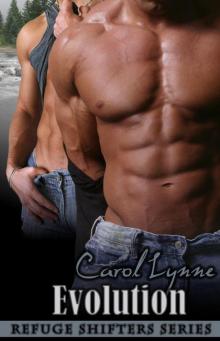 Evolution
Evolution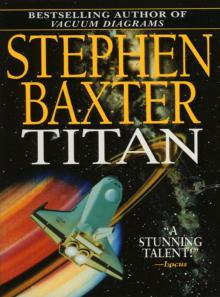 Titan
Titan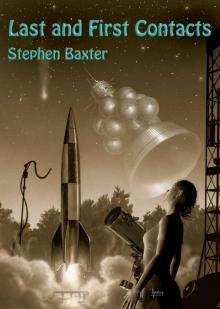 Last and First Contacts (Imaginings)
Last and First Contacts (Imaginings)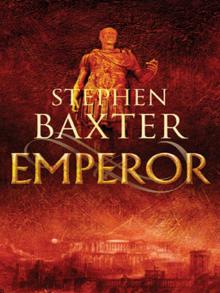 Emperor
Emperor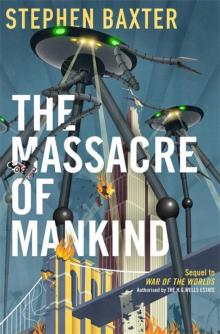 The Massacre of Mankind
The Massacre of Mankind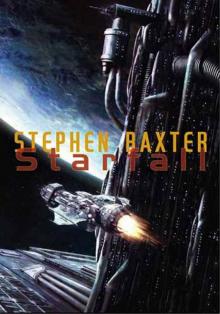 Starfall
Starfall Doctor Who - The Wheel of Ice
Doctor Who - The Wheel of Ice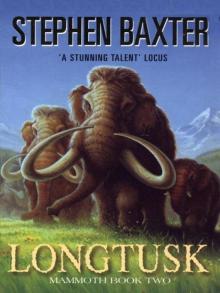 Longtusk
Longtusk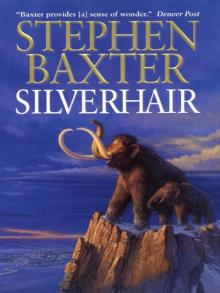 Silverhair
Silverhair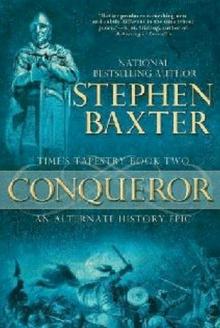 Conqueror tt-2
Conqueror tt-2 Flood
Flood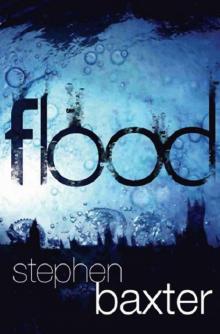 Flood f-1
Flood f-1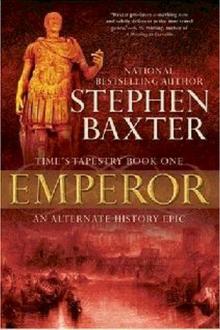 Emperor tt-1
Emperor tt-1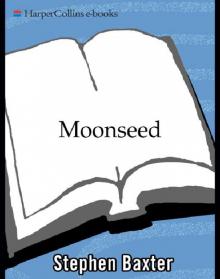 Moonseed
Moonseed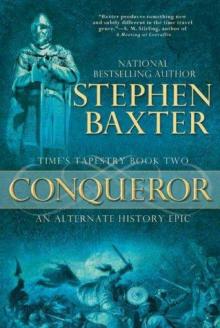 Conqueror
Conqueror Timelike Infinity xs-2
Timelike Infinity xs-2 The Ghost Pit
The Ghost Pit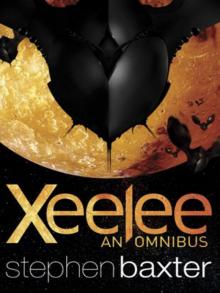 Xeelee: An Omnibus: Raft, Timelike Infinity, Flux, Ring
Xeelee: An Omnibus: Raft, Timelike Infinity, Flux, Ring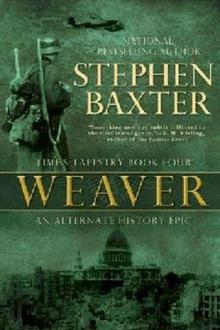 Weaver tt-4
Weaver tt-4 Landfall: Tales From the Flood/Ark Universe
Landfall: Tales From the Flood/Ark Universe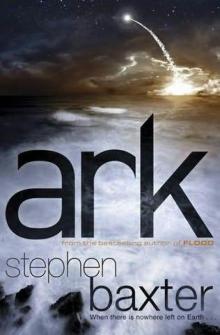 Ark
Ark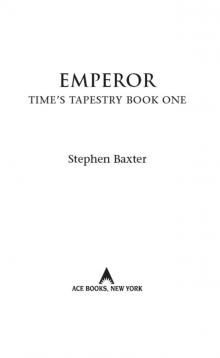 Emperor: Time’s Tapestry Book One
Emperor: Time’s Tapestry Book One Space
Space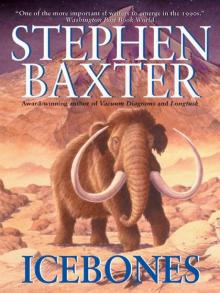 Icebones
Icebones Manifold: Space
Manifold: Space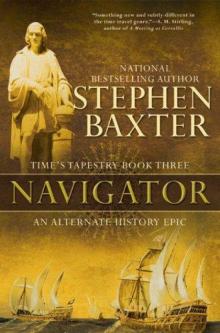 Navigator
Navigator Obelisk
Obelisk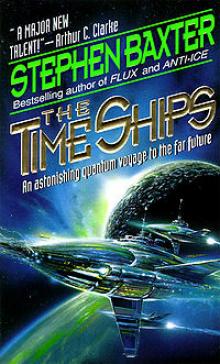 The Time Ships
The Time Ships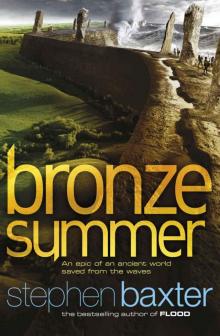 Bronze Summer
Bronze Summer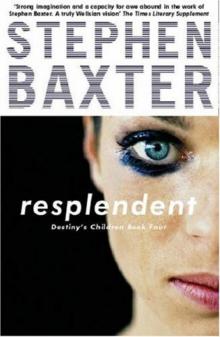 Resplendent
Resplendent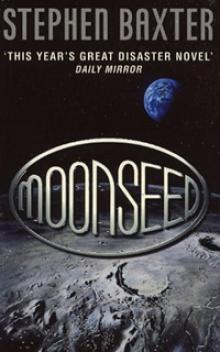 Moonseed n-3
Moonseed n-3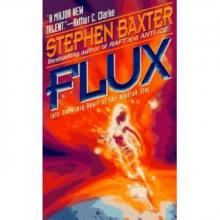 Flux xs-3
Flux xs-3 Transcendent dc-3
Transcendent dc-3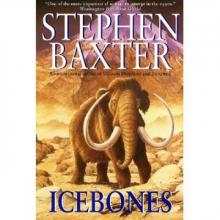 Icebones tm-3
Icebones tm-3 Phase Space
Phase Space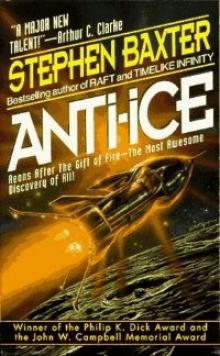 Anti-Ice
Anti-Ice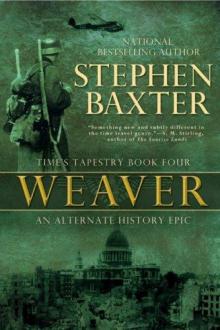 Weaver
Weaver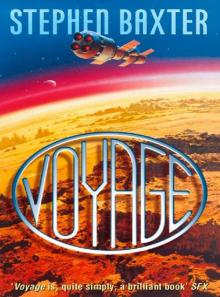 Voyage
Voyage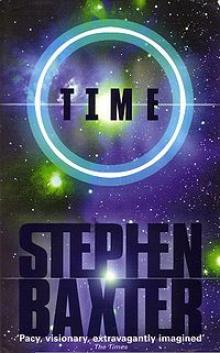 Time m-1
Time m-1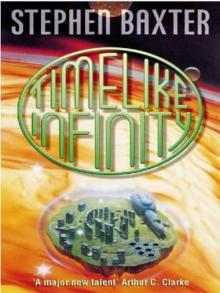 Timelike Infinity
Timelike Infinity Exultant dc-2
Exultant dc-2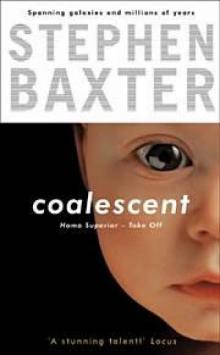 Coalescent dc-1
Coalescent dc-1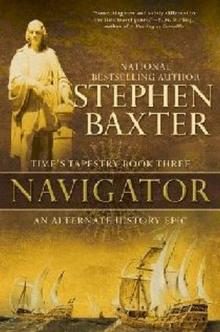 Navigator tt-3
Navigator tt-3